Name Koryūsai Koryūsai | ||
 | ||
Isoda Koryusai on 8-Poster.ru / Исода, Корюсай на сайте 8-Poster.ru
Альбом с японскими гравюрами
Isoda Koryūsai (礒田 湖龍斎, 1735–1790) was a Japanese ukiyo-e print designer and painter active from 1769 to 1790.
Contents
Life and career
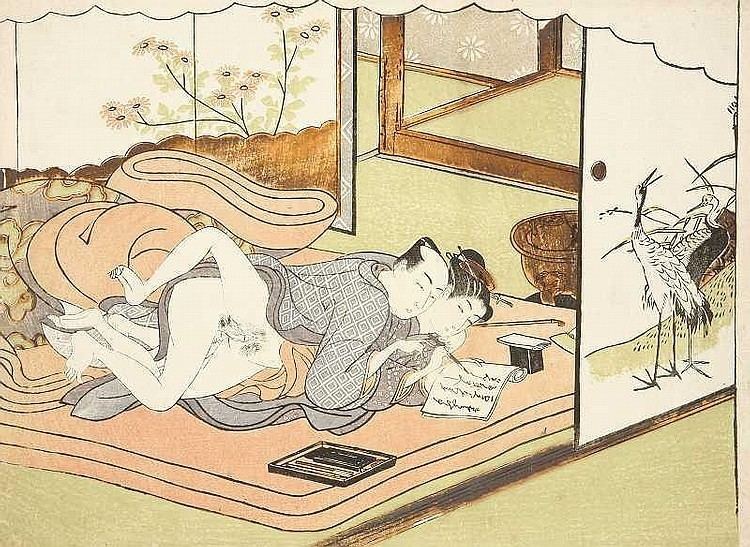
Koryūsai was born in 1735 and worked as a samurai in the service of the Tsuchiya clan. He became a masterless rōnin after the death of the head of the clan and moved to Edo (modern Tokyo) where he settled near Ryōgoku Bridge in the Yagenbori area. He became a print designer there under the art name Haruhiro in 1769, at first making samurai-themed designs. The ukiyo-e print master Harunobu died in 1770, and about that time Koryūsai began making prints in a similar style of life in the pleasure districts.
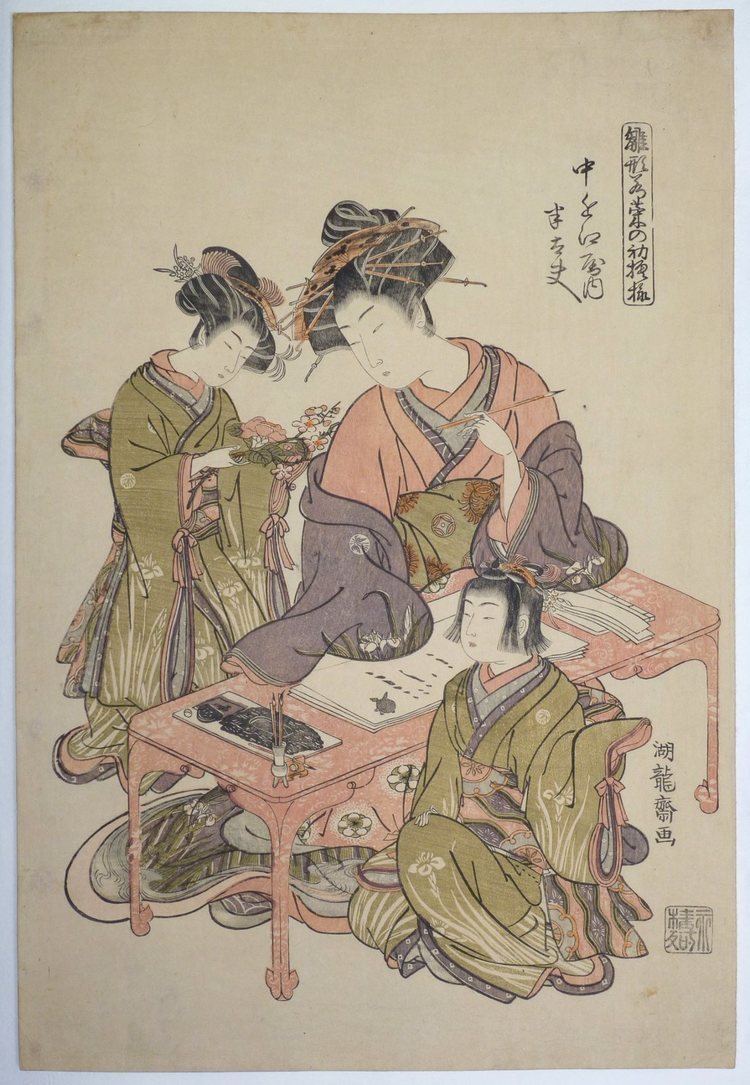
Koryūsai was a prolific designer of individual prints and print series, most of which appeared between 1769 and 1881.
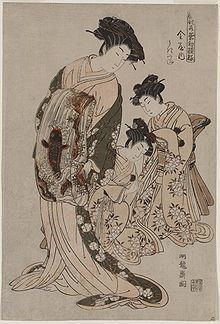
In 1782 Koryūsai applied for and received the Buddhist honour hokkyō ("Bridge of the Law") from the imperial court and thereafter used the title as part of his signature. His output slowed from this time, though he continued to design prints until his death in 1790.
Work
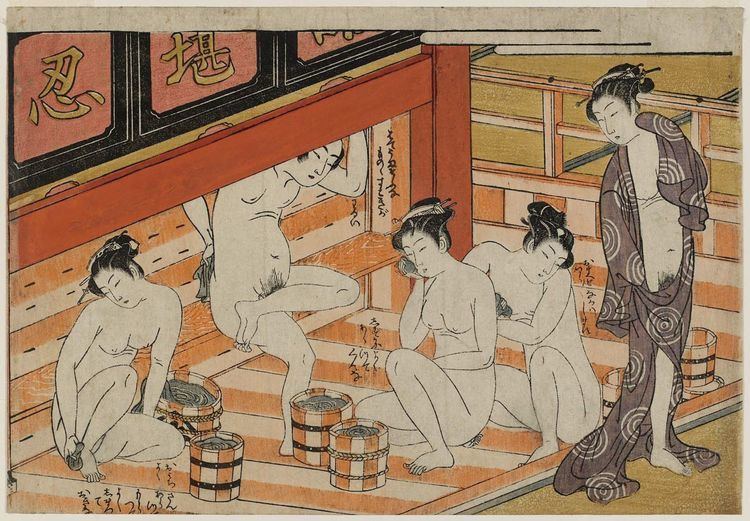
Koryūsai's known designs total 2500, or an average of four a week. According to art historian Allen Hockley, "Koryūsai may ... have been the most productive artist of the eighteenth century".
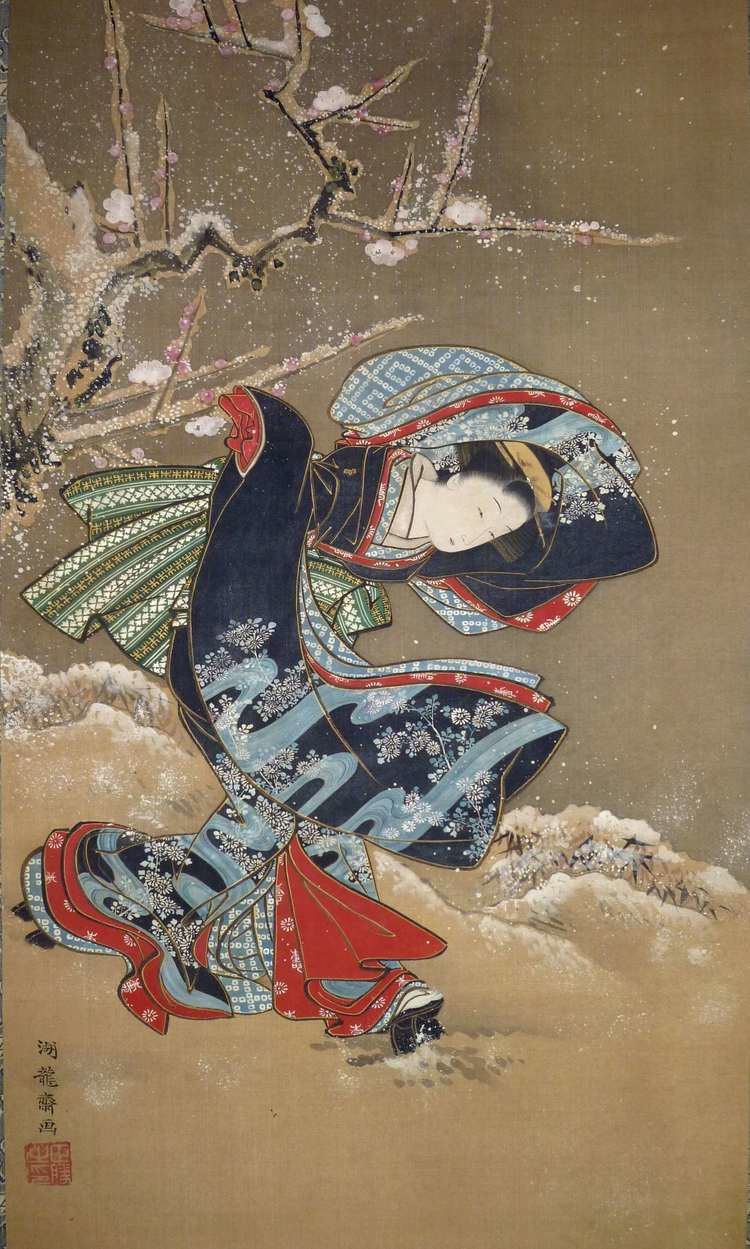
The series Models for Fashion: New Designs as Fresh Young Leaves (Hinagata wakana no hatsumoyō, 1776–81) ran for 140 prints, the longest ukiyo-e print series of beauties known. He designed at least 350 hashira-e pillar prints, numerous kachō-e bird-and-flower prints, a great number of shunga erotic prints, and others. 90 of his nikuhitsu-ga paintings are known, making him one of the most productive painters of the period.
Legacy

Despite the Koryūsai's productivity and popularity—both in his time and amongst later collectors—his work has attracted little scholarship. The first ukiyo-e histories written in the West in the 19th century elevated certain artists as examplars; Koryūsai work came to be seen as too indebted to Harunobu, who died in 1770, and inferior to Kiyonaga, whose peak period came in the 1880s. An example is Woldemar von Seidlitz's Geschichte des japanischen Farbenholzschnittes ("History of Japanese colour prints", 1897), the most popular of the early ukiyo-e histories, which paints Koryūsai as a successor to Harunobu and a rival of Kiyonaga's in the 1770s who slipped into mediocrity and immitation of his rival by the end of the decade. Interest lay mainly in the details of Koryūsai's life—a samurai who received court honours was unusual in the proletarian world of ukiyo-e.

